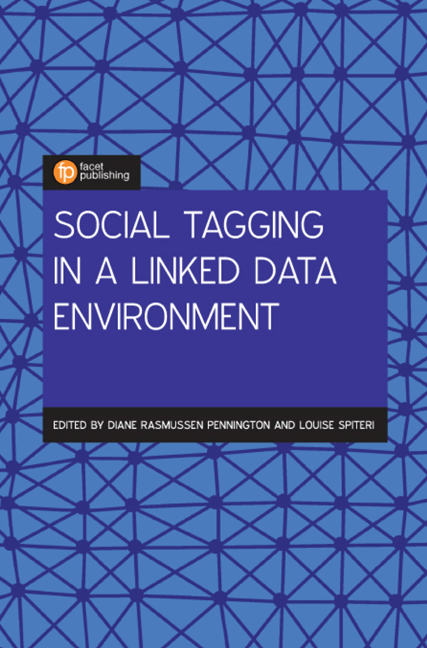Book contents
- Frontmatter
- Contents
- List of figures and tables
- Contributors
- 1 Introduction: the continuing evolution of social tagging
- 2 Tagging the semantic web: combining Web 2.0 and Web 3.0
- 3 Social tags for linked data with Resource Description Framework (RDF)
- 4 Social tagging and public policy
- 5 Hashtags and library discovery systems
- 6 Social information discoverability in Facebook groups: the need for linked data strategies
- 7 #FandomCommunication: how online fandom utilises tagging and folksonomy
- 8 Keys to their own voices: social tags for a dementia ontology as a human right
- 9 Social tagging and the enterprise: an analysis of social tagging in the workplace
- 10 Use and effectiveness of social tagging recommender systems
- Index
8 - Keys to their own voices: social tags for a dementia ontology as a human right
Published online by Cambridge University Press: 01 June 2019
- Frontmatter
- Contents
- List of figures and tables
- Contributors
- 1 Introduction: the continuing evolution of social tagging
- 2 Tagging the semantic web: combining Web 2.0 and Web 3.0
- 3 Social tags for linked data with Resource Description Framework (RDF)
- 4 Social tagging and public policy
- 5 Hashtags and library discovery systems
- 6 Social information discoverability in Facebook groups: the need for linked data strategies
- 7 #FandomCommunication: how online fandom utilises tagging and folksonomy
- 8 Keys to their own voices: social tags for a dementia ontology as a human right
- 9 Social tagging and the enterprise: an analysis of social tagging in the workplace
- 10 Use and effectiveness of social tagging recommender systems
- Index
Summary
Introduction
Dementia encompasses a range of incurable brain conditions such as Alzheimer's disease, which affected 47 million people worldwide in 2015, a figure that is expected to triple by 2050. It is therefore a worldwide public health priority (World Health Organization, 2017). While the symptoms differ among individuals to some extent, the World Health Organization (WHO) defines them as follows:
• difficulties with everyday tasks
• confusion in familiar environments
• difficulty with words and numbers
• memory loss
• changes in mood and behaviour.
Caring for people living with dementia (PLWD) is a burdensome task and it tends to fall to family members, which causes them considerable stress. The WHO's Global Action Plan on the Public Health Response to Dementia 2017–2025 focuses on dementia prevention as well as on improving the lives of PLWD and their carers so that they ‘live well and receive the care and support they need to fulfil their potential with dignity, respect, autonomy and equality’. The United Nations has called for dementia to be a public health priority in all countries (UN News Centre, 2015).
This chapter will first explore the uniquely challenging context of information needs and dementia. It will then use dementia as a case study to demonstrate how user-generated hashtags, or other forms of surrogate representation, could be applied in a linked data environment in order to improve access to care, resources, people and other needs.
Entities in the dementia ontology
Because just one PLWD affects and, conversely, is affected by, a range of entities, it is perhaps useful to consider some of the different entities and their unique contexts and needs individually. It is then easier to see how they intertwine within what this chapter calls a dementia ontology. An ontology is broadly defined as ‘a formal representation of knowledge with rich semantic relationships between terms’ (Stuart, 2016, 12). A dementia ontology, then, is a representation of knowledge with relationships between entities that are somehow related to a PLWD.
PLWD
In relation to the emphasis on person-centred care in dementia (Brooker, 2003), the PLWD should be placed at the centre of this dementia system or ontology.
- Type
- Chapter
- Information
- Social Tagging for Linking Data Across Environments , pp. 151 - 168Publisher: FacetPrint publication year: 2018
- 2
- Cited by



